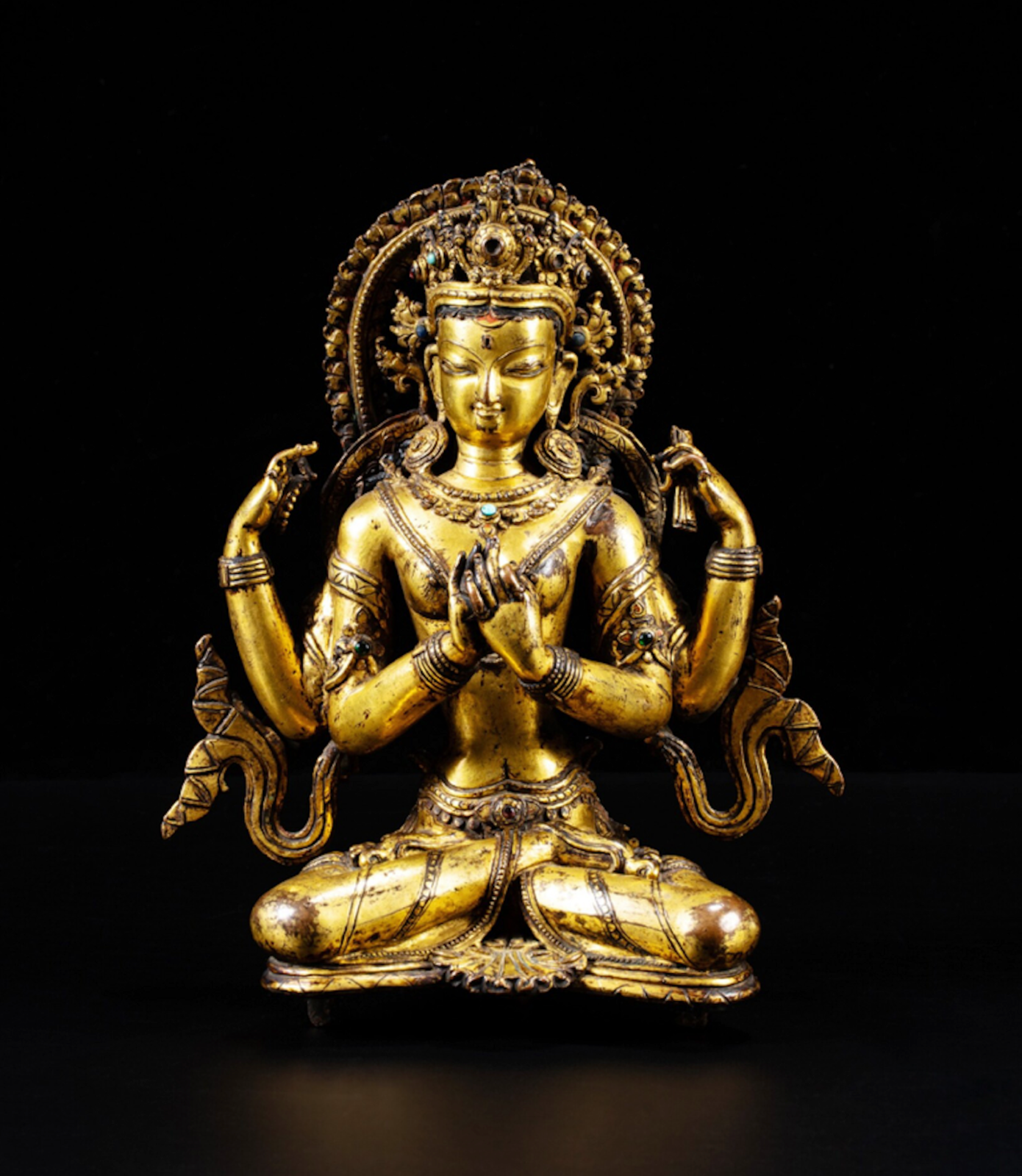
The four-armed goddess is seated with legs crossed in vajraparyankasana and holding mala rosary beads and a sutra in her upper hands, with her principal hands in dharmachakra mudra. She wears a regal crown and sumptuous gem-set jewelry, a separately-made halo attached behind. A billowing scarf is draped over her shoulders.
Her face is serene and idealized, with long, languid eyes, a straight nose, and a gentle, compassionate smile. A third eye on her forehead signifies her divine insight. The flame-shaped pinnacle of her crown and the intricate hair knots are typical of the sophisticated Newar style of the 16th century.
Prajnaparamita, the name for both a specific text and the personification of that text, represents the embodiment of the perfect wisdom of all buddhas as indicated by her Sanskrit name, which translates as “Perfection of Wisdom.” One of her main attributes is the book, which is depicted as a long rectangular manuscript of palm leaves and represents the Prajnaparamita text. She is also known as the “Mother of all Buddhas.”
